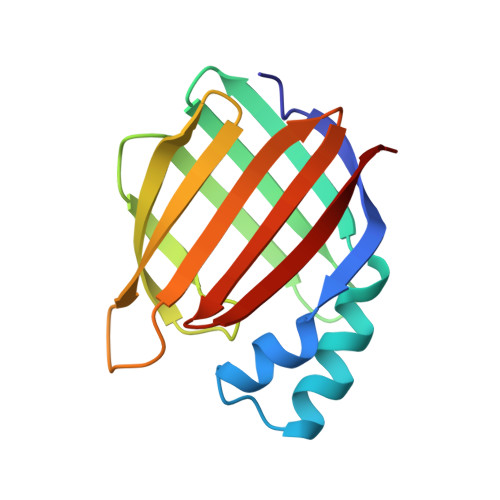Structures of cellular retinoic acid binding proteins I and II in complex with synthetic retinoids.
Chaudhuri, B.N., Kleywegt, G.J., Broutin-L'Hermite, I., Bergfors, T., Senn, H., Le Motte, P., Partouche, O., Jones, T.A.(1999) Acta Crystallogr D Biol Crystallogr 55: 1850-1857
- PubMed: 10531482
- DOI: https://doi.org/10.1107/s0907444999011026
- Primary Citation of Related Structures:
2CBR, 2CBS, 3CBS - PubMed Abstract:
Retinoids play important roles in diverse cellular processes including growth, cell differentiation and vision. Many natural and synthetic retinoids are used as drugs in dermatology and oncology. A large amount of data has been accumulated on the cellular activity of different synthetic retinoids. They are stabilized and transported inside the cell cytoplasm by binding and transport proteins, such as cellular retinol-binding proteins and cellular retinoic acid binding proteins (CRABPs). The structures of human CRABP II in complex with two different synthetic retinoids, Ro13-6307 and Ro12--7310 (at 2.1 and 2.0 A resolution, respectively) and of bovine CRABP I in complex with a retinobenzoic acid, Am80 (at 2.8 A resolution) are described. The binding affinities of human CRABP I and II for the retinoids studied here have been determined. All these compounds have comparable binding affinities (nanomolar range) for both CRABPs. Apart from the particular interactions of the carboxylate group of the retinoids with specific protein groups, each structure reveals characteristic interactions. Studying the atomic details of the interaction of retinoids with retinoid-binding proteins facilitates the understanding of the kinetics of retinoid trafficking inside the cytoplasm.
Organizational Affiliation:
Department of Cell Biology, Uppsala University, Biomedical Center, Box 596, SE-751 24, Uppsala, Sweden.















